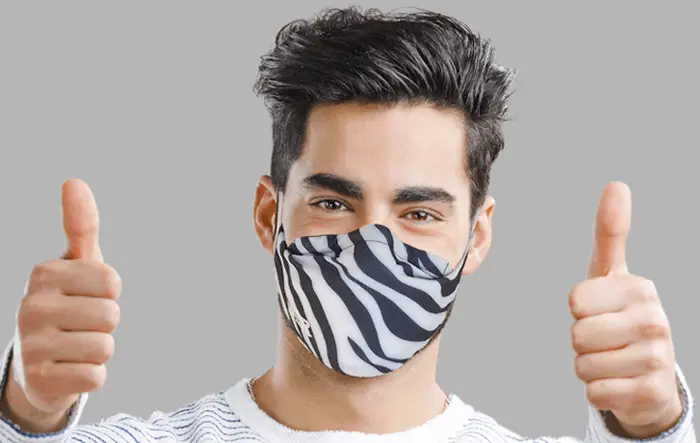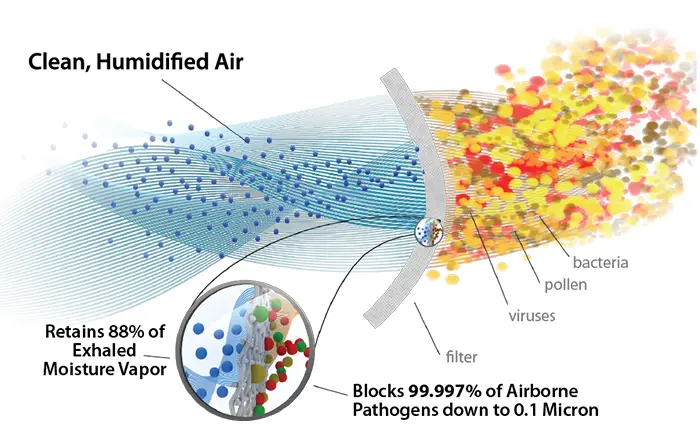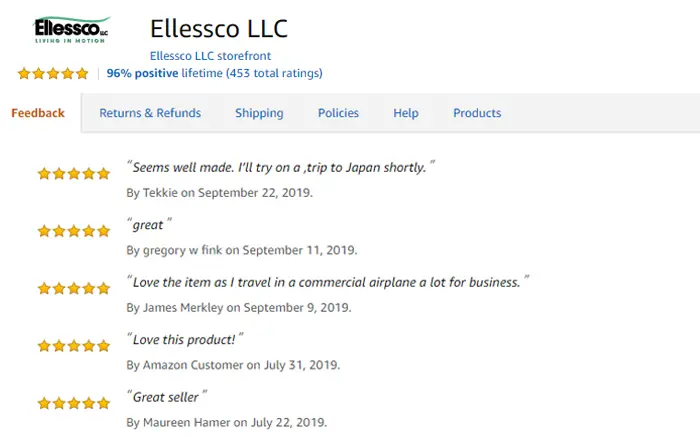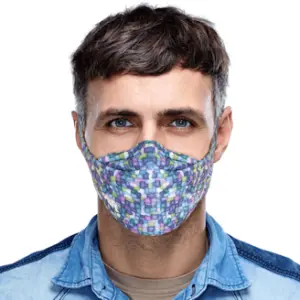It’s amazing how quickly a social shift can occur with the right pressures behind it. A year ago, masks were considered a tool, useful when you’re working with noxious gasses, fighting wildfires, or working in demolition. Wearing a mask to prevent disease was a quirk of Asian cultures, not something the average American thought to do.
The pandemic has, of course, caused an incredible shift in perspective. While there are some holdouts who feel like public safety is a matter of politics, most people have taken to mask-wearing as a matter of course. What was once a limited tool is now a piece of every-day apparel, at least until the pandemic is over.
Will this result in a cultural shift that makes mask-wearing (to prevent seasonal flu from spreading or even just as a fashion statement) a commonplace practice? Will you be wearing a mask, occasionally or routinely, even after the vaccine is distributed and the pandemic is over? Many people will, and high-end fashion designers are already taking advantage of this to produce luxury masks with brand names attached.
If you’re looking to pick up a mask to protect you from the environment or to use it as a tool, you want to look for one with functional features, such as what we discuss in this post about wildfire safety masks. If you’re more concerned about a mask you wear as a fashion statement or as part of your every-day apparel, well, stick around. We have plenty of tips to help you shop for the perfect mask.
Determine Your Goals
The first thing you want to do is determine what kind of usage you’re going to get out of your mask. There are essentially three levels of usage, though there are plenty of variations within each one.
Level one masks are the kind of masks that tend to be much more fashionable and comfortable than the other two levels available. In addition to this, level one masks may even offer reasonable protection with their own filters (depending on the brand). The focus with level one masks usually leans more towards the style and comfort of the wearer, and will very rarely be a full face sealing mask.

Level two masks are masks that are protective but don’t have nearly as much comfort or style available compared to level one. The most widely known level two masks include the N95 and the N100. Unlike the level one mask, the level two mask tends to fit more tightly to your face and thus may be less comfortable. That being said, they may be more ideal for harsher conditions and heavy-duty work, say for example, while working at a hospital.

Level three masks put function over form. They’re masks with face seals and HEPA filters, designed for use in medical situations, when exposed to wildfire smoke or hazardous materials, or otherwise meant to protect you from a wide range of potential contaminants. These masks are important for firefighters, medical workers, construction workers, asbestos remediators, and other hazardous jobs. They aren’t luxury masks, and as such, we won’t be talking much about them.

There is, of course, some cross-over between levels. Some level two masks with the right filters can be good enough to do low-end level three hazard tasks or to protect you from atmospheric smoke when you’re not near fires, but still need to live your life. Similarly, some level one masks can have filters added to them to add function to form, making them effective at many mid-range protective tasks.
The point is, you need to decide what level of function you need out of your mask. Do you want a mask for comfort and fashion, or do you need a mask to protect your lungs from airborne particulate? This will determine the kinds of masks you can shop for.
If you’ve determined you’re interested in a luxury mask that is more focused on design and comfort than filtration or serious protection, you can consider a variety of different factors to make your decision. Here are the most important bullet points to keep in mind, from what we’ve learned in producing and discussing masks over the last year.
Style
First and foremost, your primary consideration is probably the style of the mask. There are two things to consider here: the pattern and design of the fabric, and the construction of the mask.

In terms of construction, you may notice that there are a variety of different mask styles on the market. There are a handful of different major designs, but the primary differences are:
- Whether the mask is flat or contoured to the face. Flat masks are easier to fit on a variety of different people, but they tend to be less comfortable and can slip out of place. Contoured masks fit faces easier, but you may need to pick a larger or smaller mask depending on the size of your face. Children especially may find it hard to wear contoured masks that are too large.
- Whether the mask is elastic or tie-based. Elastic masks typically hook around the ears. While this does a good job of holding the mask to your face, it can also pull on the ears and cause pain and irritation. Tie-based masks usually have four individual straps, two of which tie around the back of the neck, and two of which tie above the ears. They can be more comfortable but can come loose, and it can be irritating to tie knots and undo them when necessary.
- The type of fabric the mask is made out of. Generally, the best option for protection is a tightly woven 100% cotton. Synthetic fabrics aren’t as breathable and can feel unpleasant in long-term use. A two-layer design is important for filtration, though an actual filter is better.
As for design, well, there are as many different patterns of fabric as there are designs in the universe. Thousands of businesses have sprung up making custom screen-printed masks. Other companies offer embroidery to sew a pattern into a mask. Other repeating pattern masks can be made out of pretty much any fabric design. Masks are also generally (but not always) cheap enough that you can buy several to match different outfits.
Comfort
How long will you be wearing your mask at a time? There’s a world of difference between spending half an hour in a mask while you run and get groceries, or spending six hours in a mask while you attend a politely socially distanced party of friends and family. Celebrities wearing a mask on the red carpet only need to wear it for a few minutes, while the average person might need to wear a mask for a full 8-hour shift at their job.

The longer you need to wear your mask at a time, the more you need to pay attention to comfort. Your mask should be breathable. If it has a filter, that filter should be replaceable, so you can swap filters out as necessary. If you wear glasses, you should get a mask with a metal nose piece that can conform to the contours of your face to minimize the gap where air can escape to fog them up. Tie masks are generally more comfortable than elastic masks, but elastic masks can be made more comfortable with the addition of ear protecting devices. Of course, if you’re concerned more about fashion than comfort, ear protection might not be much of a concern.
Filtering or Non-Filtering
This is another consideration that largely comes down to usage. If you’re wearing a mask for personal protection, you generally want one with at least some level of filtration. You might not be interested in getting a certified N95, but there are plenty of cloth mask options out there with replaceable filters.
If you’re getting a cloth luxury mask with a filter, you want to make sure the filter is easy to remove and replace. It doesn’t do much good if the filter is woven into the design of the mask and you need to undo stitching to get access to it. A mask with an accessible filter between layers is great for most basic applications.

A mask worn purely for fashion and luxury might not need a filter at all. It’s a fashion statement, and it’s there for looks, not for function. A filter can be stuffed and bulky and might make the mask look worse. That depends entirely on the kind of filter you get, of course.
If you want your mask to look good but still maintain a quality filter, we have you covered. There are many options beyond simply buying a gas mask and filtering cartridges or buying a thin paper mask, after all. Finding the right middle ground is important.
Mask Construction Quality
One of the most important parts of a luxury mask is the quality of the construction. Unfortunately, it’s also difficult to judge the quality of a mask’s construction without being able to handle it in person. This often means ordering a mask and trying it out, and returning it if it doesn’t work out.
One thing you can do to help mitigate the risk of a low-quality mask is buying your mask from a company rather than an individual seller. A company can produce high-quality masks in bulk, with quality control procedures in place to ensure there are no defects. They can also offer warranties and return policies. Compare that to individual sellers on Etsy or a local marketplace, whose sewing skills may not be all that great and who likely offer no recourse if a mask they made doesn’t work out.
Pricing
How much are you willing to spend on a mask? There’s something of a bell curve of quality versus price in the world of masks.
At the cheapest end, you can buy masks made by individual sellers for under $5. These masks are the bare basics; they have elastic ear loops, a simple design, low-quality materials, and no accessories like a nose piece or a filter.
Fabric masks that are engineered for comfort and with a filter included are likely closer to $20 or $30, depending on where you get them. You may have an extra fee when you need to buy additional filters once your initial pack runs out, but it can take a while to wear through them, and the mask itself will last for a while.

Masks with more additional features, like face seals, 3D printed shapes, external or cleanable gas filters, adjustable straps, or other accessories can cost an additional amount. It’s not uncommon to see masks with those added features in the $50 to $100 price range.
Then, of course, you have luxury brands making their own face mask designs. Some of these companies diverted manpower and facilities to mass-produce low-quality masks just to get them on the market, but now, months later, fashion designers have started putting their creativity to the test. These kinds of luxury masks don’t even consider the sky the limit; a diamond-and-gold mask with a luxury brand attached can cost absurd amounts of money.
Reviews and Customer Service
A final consideration for any mask you purchase is the kind of service you get if you experience an issue. This is another reason to buy a mask from a company rather than an individual; they’re likely to have a return policy and a quality guarantee. Reading reviews can help you determine if a mask is likely to have solid construction, or if there are issues with it that take it out of consideration. Look into the company, their location, their customer service, and the reviews of their products before you buy a mask.

Your choice in the type of mask you choose can say a lot about you and will be even more important in the future when the pandemic is over and masks become more of a luxury good and fashion statement than a necessity of life. Are you prepared for your future with a mask?





















0 Comments